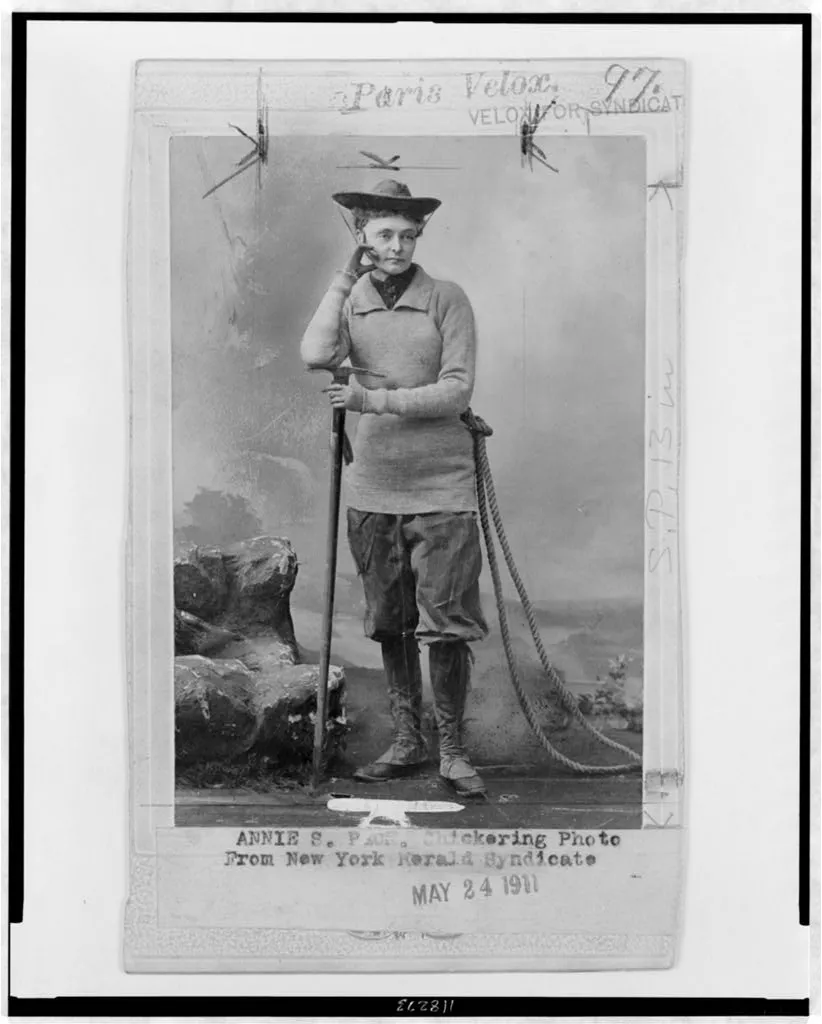Three Things to Know About Pants-Wearing Mountaineer Annie Smith Peck
Peck wasn’t wealthy and her family, who did have money, didn’t approve of her globe-trotting, mountain-climbing, pants-wearing lifestyle
/https://tf-cmsv2-smithsonianmag-media.s3.amazonaws.com/filer/d8/00/d800eab3-7826-4017-a2fe-e8b07595c4da/matterhorn.jpg)
“Climbing is unadulterated hard labor,” Annie Smith Peck wrote. “The only real pleasure is the satisfaction of going where no man has been before and where few can follow.”
Peck stands out in a generation of female mountaineers who all bucked convention. Here, three things she did that challenged sexist norms:
She wore pants
Peck, born on this day in 1850, climbed the Matterhorn in–get this–pants. That’s right. Pants. In 1895. Scandalous.
She wasn’t the first woman to summit the Swiss mountain, writes Brook Sutton for Adventure Journal–that was Lucy Walker in 1871. Walker wore a dress for her ascent, which represents its own achievement, and attracted some positive press attention, according to Claire Jane Carter writing for BMC.
In Peck's case, on the other hand, the press didn’t focus on the achievement but on the clothes that the 45-year-old was wearing. “She provoked moral outrage with her daring and eccentric climbing outfit: a hip-length tunic, knickerbockers, stout boots and woolen hose, topped off by a stout felt hat with a veil,” writes Charles T. Robinson for Yankee. It actually got so bad that public debate centered around whether or not she should be arrested for the crime of pants-wearing, Sutton writes.

She had to put up with a lot
By the time Peck summitted the Matterhorn, she had been practicing for a decade, according to American National Biography Online. She spotted the mountain while on an 1885 train trip, and vowed she’d return to climb it. But that decade of training wasn’t easy, the website writes.
“She began in her late thirties, which is considered late for a climber even by modern standards, and she was a woman. Few other mountaineers of her day would climb with a woman so she often had to rely on hired Swiss mountain guides and the occasional scientist. Peck had trouble with her male companions ranging from their temper tantrums to strikes, even sabotage. On one expedition the guides waited for her to break trail across a crevasse field then cut her ropes and returned without her to camp. When she eventually made her way back she found them all sitting around the campfire astounded at her return.”
The determination and ability she showed in this instance continued after she achieved her goal atop the Matterhorn. Now a celebrity, Peck headed to South America with the goal of being the first person to climb the tallest mountain in the Americas. She competed with another female climber, Fanny Bullock Workman, on this achievement.
She was a feminist
Peck's family didn’t approve of her globe-trotting, mountain-climbing, pants-wearing lifestyle. She supported herself by traveling and lecturing about her adventures, something she was well prepared for from her previous career as a teacher, as well as by writing magazine and newspaper articles. “My home is where my trunk is,” she said, according to Sutton.
She also supported feminist causes–particularly the vote–planting a “Votes for Women” flag at the peak of Mount Coropuna in Peru, which she climbed at the age of 61, writes Encyclopedia Britannica. Additionally, she was among four women who helped to found the American Alpine Club–meaning that important organization in the historically exclusionary world of mountaineering always accepted women as members.